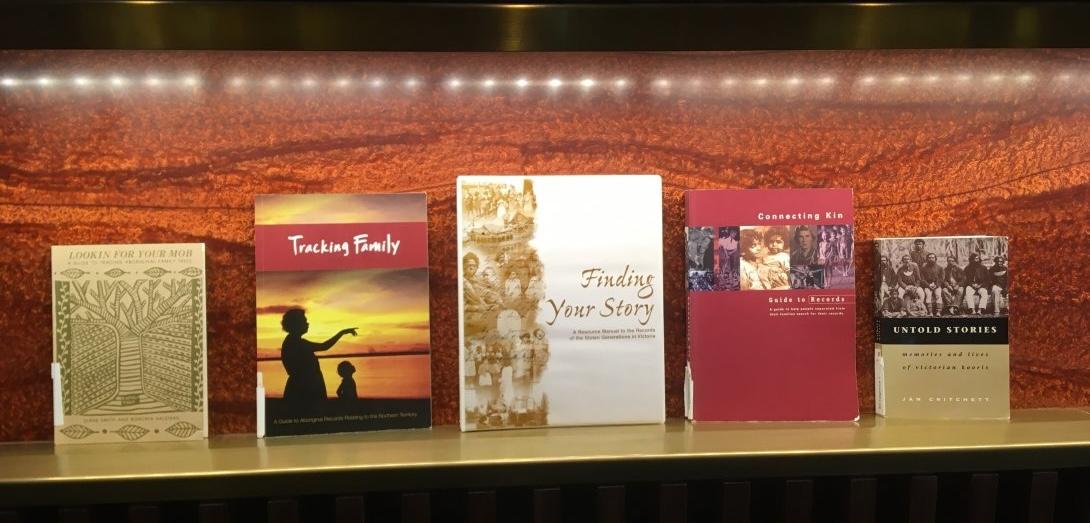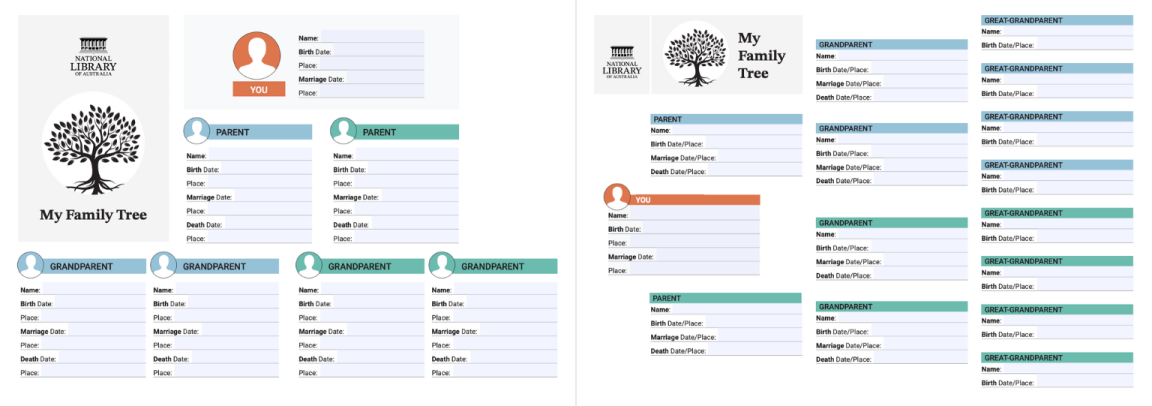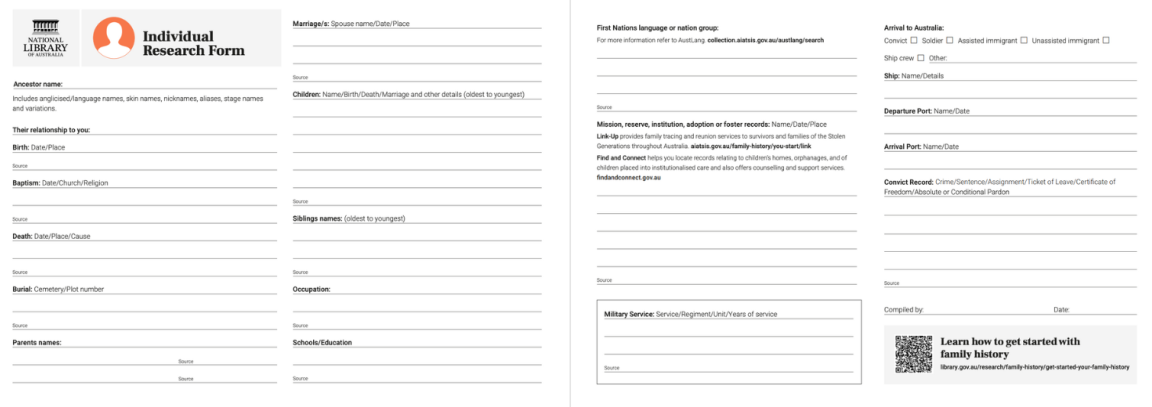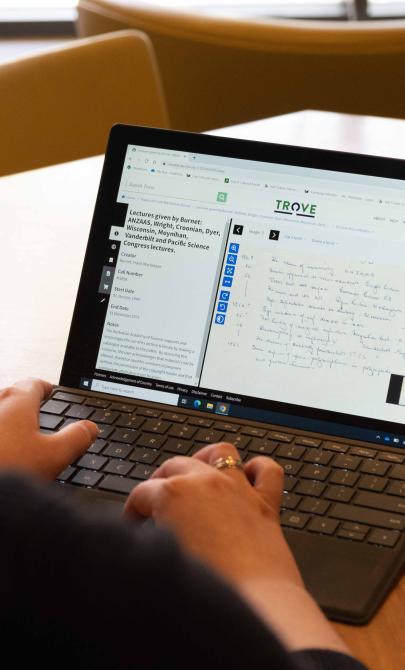Getting started with First Nations family history
Research tips
- Keep in mind, finding information and records takes time and effort.
- Make good notes from the start to help you backtrack if you need to.
- Explore many sources and collections so you can put all the pieces together.
- Remember sometimes records of your family may be scarce, lost or not exist, such as when births, marriages or deaths were not registered.
- Share your journey with family and friends so you have support as viewing records that are derogatory or offensive can be distressing.
- Be aware just because something is documented does not make it the truth – weigh up what you read against you and your family’s knowledge and experiences.

Some of the First Nations family history reference books that can be found in our collection.
Some of the First Nations family history reference books that can be found in our collection.
Step 1: Gather information
Your community and family connections can be a good place to start researching your family’s history. Where it’s possible, talking and sharing stories with family members or community can be helpful and may assist you with find documents, photos and hearing first-hand accounts of your family’s history.
If you are still searching out family connections, there are community elders and organisations, such as Link-Up, who can help you get started and support you.
If you have access to them, it can also be helpful to collect or copy documents such as birth certificates, newspaper articles, letters or diaries to assist with your research.
Step 2: Write down as much as can about your family
Ask questions like:
- Do I know my ancestors' traditional name, kinship name, European first and/or last name (sometimes the name of the pastoral station where they worked), or nickname? Their name may have changed with marriage, adoption or fostering.
- Do I know any birth, death or marriage dates?
- Do I know what mobs or peoples they belonged to?
- Do I know the towns or areas they lived in? Did they move between towns or colonies or states?
- Do I know which parishes they lived in, or which churches they belonged to in which towns?
- Do I know if my family lived on an Aboriginal reserve, mission or station?
- Do I know of any Stolen Generations family members?
- Do I know if my family members served in any wars?
Step 3: Use family research tools
A step-by-step approach, working backwards from yourself, is the easiest way to trace your ancestry – going from the known to the unknown, one generation back at a time.
Start by writing down your full name, date and place of birth, followed by your parents' full names, dates and places of birth and so forth.
Browse our family history charts to decide which tools work best for you.
The Australian Institute of Aboriginal and Torres Strait Islander Studies (AIATSIS) also has an excellent range of resources including family tree charts.
Step 4: Identify the gaps
Looking over your family history tree chart, you can start working out what gaps need to be filled and where you want to dive deeper.
Choose an ancestor to focus on and capture details like Country and mob, births, marriages, education, occupations or military service using our individual research form.
Step 5: Explore other guides and support
Check our family history page which directs you to other important research guides for your research. Also refer to the Where else to look section of this guide to find valuable family history resources held by other agencies and collecting institutions.
The Australian Institute of Aboriginal and Torres Strait Islander Studies (AIATSIS) has developed great material for First Nations family history researchers. Go to AIATSIS Family History which has a very useful and Family History Kit.
Get tips and tricks for how to research your family history from our videos .
You can also use books from our catalogue, like:
- Family history for beginners and beyond
- Tracing your family history online for dummies
- Collins tracing your family history
Get help with your research
Our librarians can offer some tips, help you locate resources and point you in the right direction, but we are not able to undertake extensive family history research on your behalf.
You can use our Ask a Librarian service to access assistance, ask us specific questions and provide us with information you have already gathered, such as: a family tree, any family papers and photos, or family history notes.
Our Indigenous Engagement team may also be able to offer general guidance and support to First Nations researchers.





